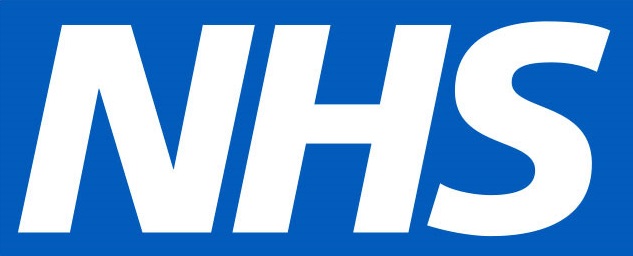Trigger Finger Surgery
Trigger finger (stenosing tenosynovitis) is a painful condition that affects the tendons in the hand. As the finger or thumb is bent towards the palm, the tendon gets stuck and the finger clicks or locks
Around 2-3% of people develop trigger finger. While the cause of trigger finger is not known, certain factors may increase the likelihood of it developing. For example, it is more common in:
* females,
* people who are over 40 years of age, and
* people with certain medical conditions.
What our patients say
Very friendly people and quick and easy service
Hathaway Medical Centre – Apr 24
Extremely friendly, courteous service and made me feel very at ease.
Kingskerswell Health Centre – Apr 24
Very friendly, helpful nothing too much trouble
White Horse Medical Centre – Apr 24
I feel like I can trust the team because of their confidence
Hathaway Medical Centre – Apr 24
Excellent communication and care from start to finish
Aspen Centre – Apr 24
No big wait time, straight in and welcomed into surgery
The County Practice, Syston – Apr 24
Much better than waiting at hospital all day!
White Horse Medical Centre – Apr 24
Prompt , efficient service. Friendly staff. Made me feel so welcome
Salisbury (Millstream House) – Apr 24
Everything went well. I didn’t feel a thing
The County Practice, Syston – Apr 24
Everyone helpful, explained everything well. Polite
Aspen Centre – Apr 24
Made to feel very welcome and at ease and with very little pain
Hathaway Medical Centre – Mar 24
Experience with the surgeon and nurse was excellent and kept me at ease
Kingskerswell Health Centre – Mar 24
All very friendly and cheerful, kept me calm. A lovely team
White Horse Medical Centre – Mar 24
Everything went as planned in a friendly environment. Full explanations were offered afterwards, and all questions answered
Hathaway Medical Centre – Mar 24
Great care from all of the nurses and doctors
Aspen Centre – Mar 24
I felt immediately relaxed by all the friendly staff who executed confidence
The County Practice, Syston – Mar 24
Superb! Highly recommend!
White Horse Medical Centre – Mar 24
Minute I met the surgeon I knew I wanted her to do the op – lots of advice, explained everything very well. Friendly service
Salisbury (Millstream House) – Mar 24
The whole process, team friendly, felt at ease
The County Practice, Syston – Mar 24
Quick and easy, everyone so friendly here. Cannot fault it
Aspen Centre – Mar 24
Brilliant service – Love the country music!
Kingskerswell Health Centre – Jan 24
Amazing friendly team! Calm, made me feel relaxed and I didn’t feel a thing throughout the procedure. Can’t thank you enough!
Hathaway Medical Centre – Jan 24
After feeling scared, I have been made to feel safe & comfortable. Nurses & surgeon checked on me at every stage
Hathaway Medical Centre – Jan 24
Administration excellent all the way through. Everything explained clearly with good note to take away. All staff friendly and considerate.
White Horse Medical Centre – Jan 24
Brilliant. Hernia detected and fixed in 2 weeks! Surgery done very competently, without significant pain
Aspen Centre – Jan 24
Brilliant surgeon and team. Friendly, caring, and chatty. Well done <3 x
The County Practice, Syston – Jan 24
Great service – friendly reassurance clear information. Thank you for tea.
White Horse Medical Centre – Jan 24
Can’t believe how quick the operation was!
White Horse Medical Centre – Jan 24
You were all very kind and caring for a particularly nervous patient
Hathaway Medical Centre – Jan 24
Local, modern premises, excellent staff, spotlessly clean, parking facilities
The County Practice, Syston – Jan 24
Very welcoming, made you feel as comfortable as possible.
Kingskerswell Health Centre – Nov 23
Totally professional, friendly, welcoming.
White Horse Medical Centre – Nov 23
Efficient lovely staff, really kind and supportive.
Hathaway Medical Centre – Nov 23
Everyone was amazing, so kind & caring. Very informative.
White Horse Medical Centre – Nov 23
Made to feel relaxed and supported through procedure.
Aspen Centre – Nov 23
Well organised, well informed, friendly and professional.
The County Practice, Syston – Nov 23
Everything was thoroughly explained – excellent care & treatment throughout.
White Horse Medical Centre – Nov 23
Absolutely delighted with the service I’ve received. Everyone is so kind.
White Horse Medical Centre – Nov 23
Very welcoming, very friendly and excellent job done.
Hathaway Medical Centre – Nov 23
Quick, efficient, lovely staff – same surgeon – continuity.
Aspen Centre – Nov 23
Much easier than going to Torbay + very friendly.
Kingskerswell Health Centre – Oct 23
Friendly, professional and explained what was happening every step of the way. No trouble, no drama.
Hathaway Medical Centre – Oct 23
Very well organised, lovely staff.
Hathaway Medical Centre – Oct 23
Easy, friendly, efficient, informative, made me feel very at ease.
White Horse Medical Centre – Oct 23
I felt looked after and cared for all the way through pre-surgery and surgery.
Aspen Centre – Oct 23
The staff were friendly and well aware of my needs and therefore kept me suitably distracted.
The County Practice, Syston – Oct 23
Everyone is so lovely – I was nervous but the staff put me at ease.
White Horse Medical Centre – Oct 23
Thank you, I’m very pleased – it’s like a light has been turned on.
White Horse Medical Centre – Oct 23
I’ve been very well received and am very pleased. Explained everything very well.
Aspen Centre – Oct 23
Has enjoyed this experience, painless, quick, very quickly seen and treated. Brilliant.
The County Practice, Syston – Oct 23
Excellent service, great staff. Fully informed.
White Horse Medical Centre – Sept 23
Friendly, funny but professional.
Kingskerswell Health Centre – Sept 23
Attentive care, good explanation.
Hathaway Medical Centre – Sept 23
Very friendly staff, perfect explanation about procedure.
White Horse Medical Centre – Sept 23
Fantastic care, and excellent service.
Aspen Centre – Sept 23
Everyone I met today was excellent. Very friendly and attentive.
The County Practice, Syston – Sept 23
Thank you very much – compassionate, professional staff.
White Horse Medical Centre – Sept 23
I’ve been treated extremely well by a wonderful team.
White Horse Medical Centre – Sept 23
Splendid treatment, couldn’t be happier.
Aspen Centre – Sept 23
Efficient, friendly, kind, informative. Easy to access.
The County Practice, Syston – Sept 23
Made to feel very comfortable – lovely team
The County Practice, Syston – May 23
Always been really easy, friendly, professional and a relaxed environment
Aspen Center – Jun 23
Excellent service from start to finish
The County Practice, Syston – Jun 23
Get in touch

